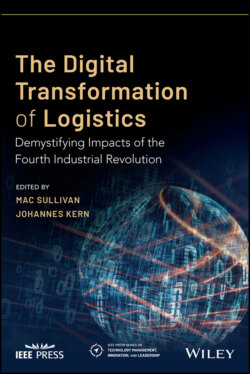Читать книгу The Digital Transformation of Logistics - Группа авторов - Страница 60
Key Takeaways
ОглавлениеInternet of Things (IoT) is spreading and transforming almost all sectors including logistics, manufacturing, agriculture, healthcare, or building management. IoT enables physical devices, embedded with electronics, software, sensors, actuators, and network connectivity, to collect and exchange data.
Logistics managers must understand IoT‐related technologies such as sensors, networking technology (e.g. 5G), big data, AI, autonomous robots and vehicles (e.g. drones, AGV), augmented reality (AR) and virtual reality (VR), and the overall IoT concept as well as its implications for managing material and information flows in supply chains.
As IoT is about “connection,” logistics management needs to assess how to get connected. It is important to define which “Thing” in the supply chain, e.g. a product component, finished product, box, or container, needs to be monitored by sensors and always be online.
Based on customer’s requirements, criticality of the “Things” to influence the supply chain performance, and requirements from the business model, it must be decided which Thing should be connected to enable faster and more efficient operations.
Connecting “Things” allows to gather big data that allows for better decision making in terms of time, cost, or quality than before. Logistics management must decide which data is needed, e.g. data about the on‐time delivery of products, quality of the product in transit, or security of facilities and vehicles, and how decisions should be made.
Decisions can be either manual, automated, or autonomous, with varying degrees of human intervention necessities and possibilities. In the highest level of automated decision making, AI systems will autonomously find solutions and come to decisions based on self‐learned behavioral patterns.
Logistics management in an IoT world demands new skills and a new way of thinking about how to provide the right Thing, in the right quantity, at the right time, to the right place. Such skills include data analytics, process mapping, ability to react faster, verification of AI decisions, and human–machine interaction.
Finally, logistics management must work on improving the currently often low level of data quality to enable more automated decisions and closely collaborate not only with the “classical” material flow‐related players but also IT‐related ones.
